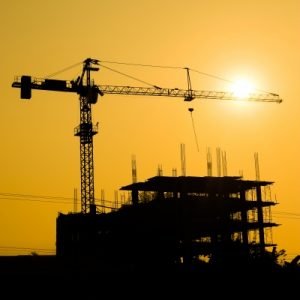Ever since the onset of what is now being called “The Great Recession”, people have been discussing ways to help prop up the economy and reduce unemployment. One of the most prominent suggestions is to increase the government’s infrastructure investment. This strategy is favored by Keynesian economists as a way to stimulate the economy. In fact, it has been used by past administrations whenever there was a need to stimulate business and create new jobs as far back as Roosevelt’s “CCC” workers. Infrastructure investment is at least better than simply pumping money into the economy and getting nothing from it. At least with infrastructure you get highways, bridges, dams etc.
The Domino Effect
 When the government invests funds in infrastructure projects, it creates millions of new jobs. The bulk of these come from direct jobs, meaning those which are involved in the creation of the new structures, their renovation, and maintenance. We are talking about the engineers, the architects, the contractors, the construction workers, the machinery technicians, the building inspectors, and other skilled workers. Construction is a very labor-intensive endeavor so it is perfect for decreasing unemployment.
When the government invests funds in infrastructure projects, it creates millions of new jobs. The bulk of these come from direct jobs, meaning those which are involved in the creation of the new structures, their renovation, and maintenance. We are talking about the engineers, the architects, the contractors, the construction workers, the machinery technicians, the building inspectors, and other skilled workers. Construction is a very labor-intensive endeavor so it is perfect for decreasing unemployment.
The need for building materials will require the manufacturing sector to increase output for products such as cement, metal, glass, rubber, plastics, and wood. This will lead to the further creation of jobs like chemists, factory workers, logistics personnel, and support staff. The greater the dependence on locally produced materials, the more jobs will be created. The service sector will also experience resurgence in demand as well as the associated job growth. All of these will mean enhanced purchasing power for millions of households which should increase consumer spending.
Gross Domestic Product
The expansion or contraction of the economy is measured through the GDP. It is estimated that every dollar invested on infrastructure projects result in as much as a $1.59 return. This makes it so much more effective as an economic stimulus than tax cuts which add a mere $0.29 to the GDP for every dollar of reduced government revenue. Among the reasons for the lower return is the fact that most consumers spend their savings on imported products.
Aside from helping the economy grow, infrastructure investments will also fill up the government’s coffers through taxes. The larger number of productive individuals will now pay income tax instead of collecting unemployment checks. The collection of indirect taxes will shoot up as well thanks to higher consumer spending and excise duties.
Competitiveness
Aside from driving job growth, infrastructure projects serve to improve the country’s level of competitiveness. Roads and bridges, for instance, should be well-maintained to facilitate the transport of goods. Any damage or structural weakness could adversely affect business. Airports should have enough runways to accommodate the flights and advanced security features to guarantee the safety of passengers. Piers may need to be expanded to accommodate more cargo. Power plants must generate sufficient to sustain industries. Water must be clean and abundant. These are things that multinational corporations evaluate when looking for new business opportunities. All things being equal, they will flock to where there is better infrastructure for them to work with.
Better Services
Of course, it is not just business which will reap the benefits. Ordinary citizens will feel the positive impact of this infrastructure spending through improved government services and, hopefully, reduced costs. After all, it is the people who regularly use the roadways, waterways, transportation systems, and utilities.
Challenges to Infrastructure Spending
Infrastructure investments may have a lot of benefits but they also face a number of challenges. The large funding required to get them started will encounter resistance from many sectors. Even the approved ones may take time to break ground, but that is simply the nature of big construction projects. As long as they are carefully planned and managed, they’ll come through and boost job growth.
Another drawback is government inefficiency. Unfortunately, whenever bureaucracy is involved planning, regulation, delays and costs skyrocket. Donald Trump provides a good example with the Wolman Ice Rink in Central Park. For years the city of New York had been working on refurbishing the public ice rink and just when they were about to finish some new problem would crop up that required them to start over.
The rink was closed in 1980 for an announced 2 1/2 years of renovations. Six years later the work was still not completed. And it was announced that it would require several more years. At this point, Donald Trump got tired of waiting. Trump approached Mayor Ed Koch to let him complete the work and said he would have it done in 6 months. At first Koch objected, even though Trump offered to do it for free. Finally, under intense public pressure he relented. Instead of years or even 6 months, Trump completed the renovations in three months to have it open by the end of the year. A prime example of the difference between the efficiency of private and public projects.
See Also:
- How paper money fails
- How to Create More Jobs- America
- Best States for Relocation with Regards to Income Tax
Resources:
Image courtesy of chayathonwong2000 / FreeDigitalPhotos.net
